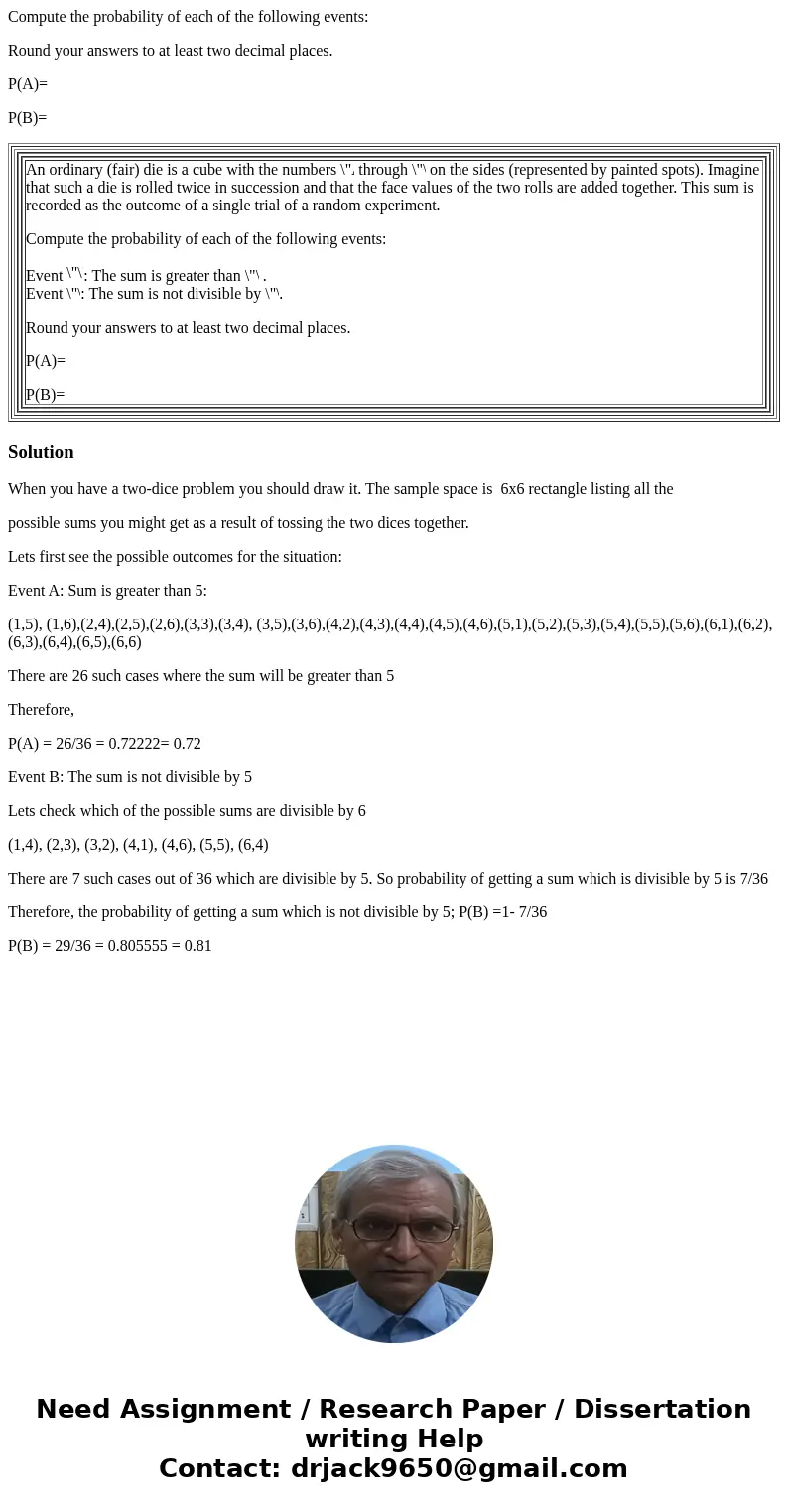Compute the probability of each of the following events Roun
Compute the probability of each of the following events:
Round your answers to at least two decimal places.
P(A)=
P(B)=
|
Solution
When you have a two-dice problem you should draw it. The sample space is 6x6 rectangle listing all the
possible sums you might get as a result of tossing the two dices together.
Lets first see the possible outcomes for the situation:
Event A: Sum is greater than 5:
(1,5), (1,6),(2,4),(2,5),(2,6),(3,3),(3,4), (3,5),(3,6),(4,2),(4,3),(4,4),(4,5),(4,6),(5,1),(5,2),(5,3),(5,4),(5,5),(5,6),(6,1),(6,2),(6,3),(6,4),(6,5),(6,6)
There are 26 such cases where the sum will be greater than 5
Therefore,
P(A) = 26/36 = 0.72222= 0.72
Event B: The sum is not divisible by 5
Lets check which of the possible sums are divisible by 6
(1,4), (2,3), (3,2), (4,1), (4,6), (5,5), (6,4)
There are 7 such cases out of 36 which are divisible by 5. So probability of getting a sum which is divisible by 5 is 7/36
Therefore, the probability of getting a sum which is not divisible by 5; P(B) =1- 7/36
P(B) = 29/36 = 0.805555 = 0.81

 Homework Sourse
Homework Sourse